According to the State of Michigan, the total number of COVID cases in Michigan rose to 58,870 on June 7, an increase of 121 cases from the previous day. The daily total was equivalent to 589 cases per 100,000 people (Chart 4). Of those 121 cases, 5 were documented in Southeastern Michigan. In Chart 1 we show that the State total for the number of COVID cases on June 5 was 58,484–a five-day rolling average. The five-day rolling average for the total number of COVID cases (Chart 1) reflects a smoother curve and adjusts for fluctuations in testing and/or the quality of reporting or failure to report.
Chart 2 shows that, based on the five-day rolling averages, the growth of new COVID cases in Southeastern Michigan has continued to increase at a slower pace. On June 5, the number of cases in Detroit reached 11,123, the highest in the region, and Wayne County reported the second highest number of cases at 9,482. On June 5, the five-day rolling average for the number of COVID cases in Oakland County was 8,447, and Macomb County reported 6,819.
The City of Detroit had 1,664 COVID cases per 100,000 people as of June 5, an increase from 1,657 on June 5 (Chart 3). This is based upon a reported increase of 52 new COVID cases since June 5, bringing the total number of COVID cases in Detroit to 11,196. Wayne County reported 880 cases per 100,000 people, and Oakland County had 671 cases per 100,000 people. These per capita rates were based upon 9,474 total cases for Wayne and for 8,438 Oakland. Macomb County reported 777 cases per 100,000 people, which is based upon 6,790 cases.
The daily data highlighted in these posts is from Michigan.gov/coronavirus, where data is updated daily at 3 p.m. Historical data were supplied from covidtracking.com, which republishes COVID data from the State. Additionally, the case totals do not reflect the number of people who have recovered, just those who have been infected.
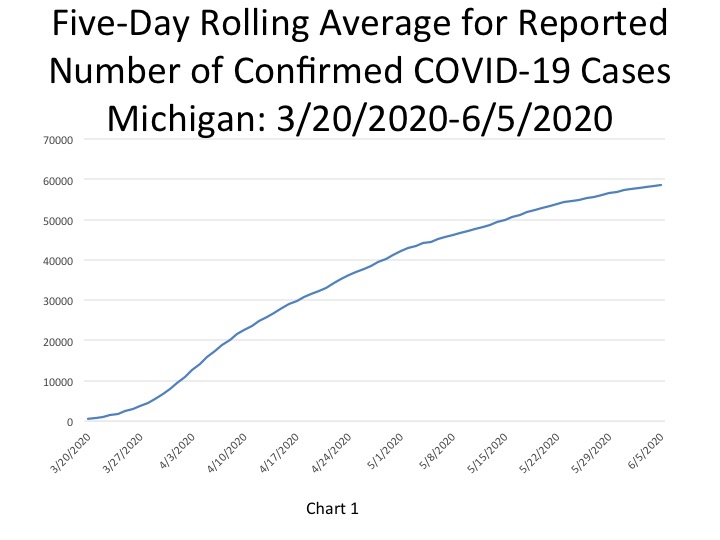
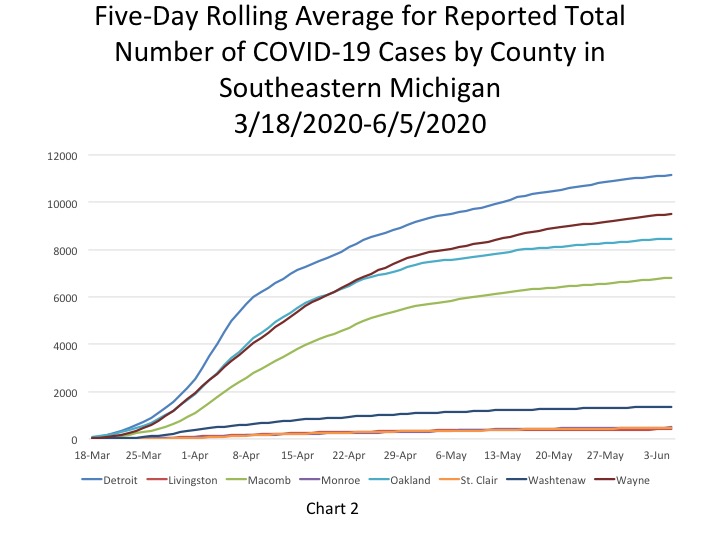
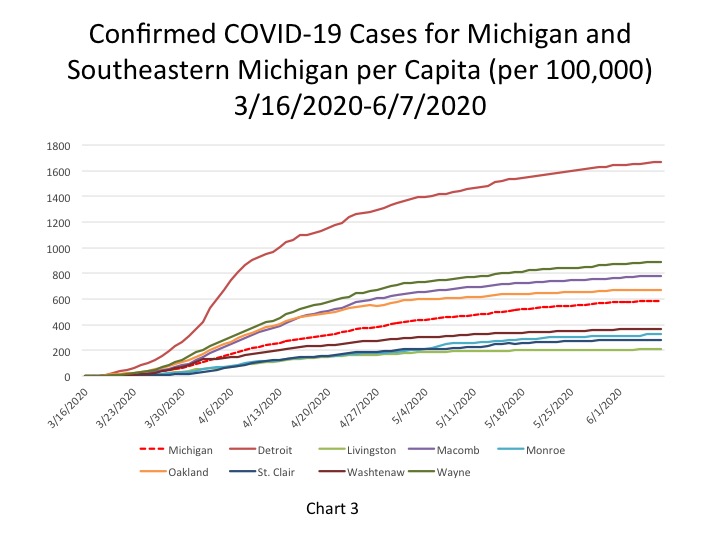
According to the State of Michigan, the total number of COVID cases in Michigan rose to 58,870 on June 7, an increase of 121 cases from the previous day. The daily total was equivalent to 589 cases per 100,000 people (Chart 4). Of those 121 cases, 5 were documented in Southeastern Michigan. In Chart 1 we show that the State total for the number of COVID cases on June 5 was 58,484–a five-day rolling average. The five-day rolling average for the total number of COVID cases (Chart 1) reflects a smoother curve and adjusts for fluctuations in testing and/or the quality of reporting or failure to report.
Chart 2 shows that, based on the five-day rolling averages, the growth of new COVID cases in Southeastern Michigan has continued to increase at a slower pace. On June 5, the number of cases in Detroit reached 11,123, the highest in the region, and Wayne County reported the second highest number of cases at 9,482. On June 5, the five-day rolling average for the number of COVID cases in Oakland County was 8,447, and Macomb County reported 6,819.
The City of Detroit had 1,664 COVID cases per 100,000 people as of June 5, an increase from 1,657 on June 5 (Chart 3). This is based upon a reported increase of 52 new COVID cases since June 5, bringing the total number of COVID cases in Detroit to 11,196. Wayne County reported 880 cases per 100,000 people, and Oakland County had 671 cases per 100,000 people. These per capita rates were based upon 9,474 total cases for Wayne and for 8,438 Oakland. Macomb County reported 777 cases per 100,000 people, which is based upon 6,790 cases.
The daily data highlighted in these posts is from Michigan.gov/coronavirus, where data is updated daily at 3 p.m. Historical data were supplied from covidtracking.com, which republishes COVID data from the State. Additionally, the case totals do not reflect the number of people who have recovered, just those who have been infected.
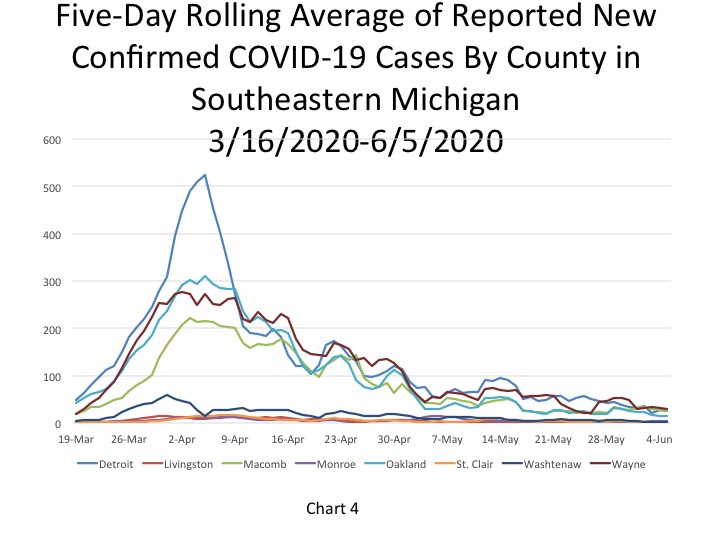
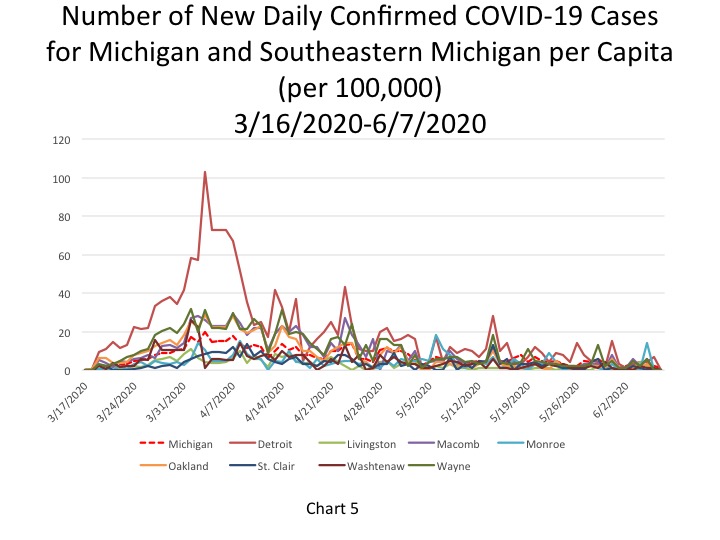
In Chart 6, the five-day rolling average for the number of deaths in Michigan shows a continuing slow increase (a lagged number of 5,618 deaths, an increase of 12 deaths). The actual reported COVID-19 deaths on June 7 was 5,656, an increase of 4 deaths from the day prior. All of those deaths occurred in Southeastern Michigan, 3 in Detroit and 1 in Wayne County.
Chart 7 (a 5-day rolling average) portrays how Detroit continues to report the highest cumulative number of deaths at 1,391 on June 5. Wayne County had the second highest total at 1,110 on June 5.
Reflective of the trend, we saw with the per capita rates earlier in this post, many of them in Southeastern Michigan remained the same due to no or minimal increases in the number of deaths over the weekend. Detroit reported 208 COVID deaths per 100,000 people on June 7, which was equivalent to 1,398 deaths (an increase of 3 from the day before). Wayne County reported 104 COVID deaths per 100,000 people on June 7, which was equivalent to 1,116 total deaths (an increase of 1 from the day prior).
Chart 9, the five day rolling average of deaths, shows the number of new statewide deaths was reported at 12 on June 5, a continued decline over the last several days. Furthermore, Chart 10 shows how the number of deaths in Southeastern Michigan also either remained stagnant or declined. Detroit and Macomb, Oakland and Wayne counties all reported new deaths. Detroit and Wayne County each reported 4 and Macomb and Oakland counties each reported 3 new deaths. These numbers are based on 5-day rolling averages.
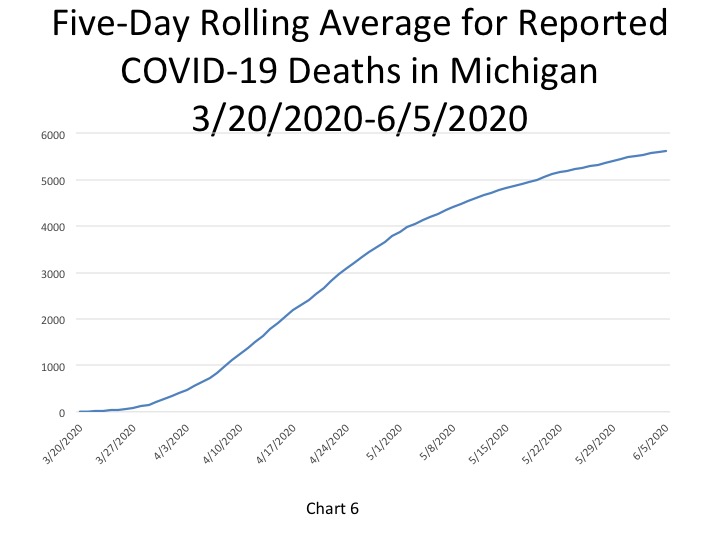
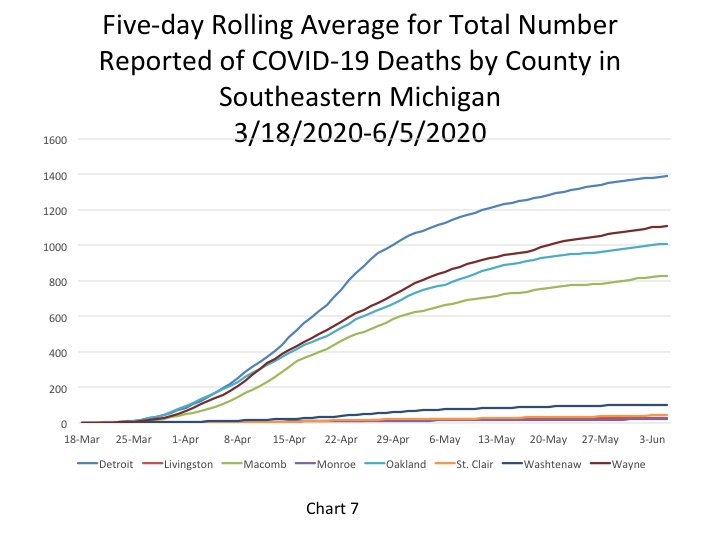
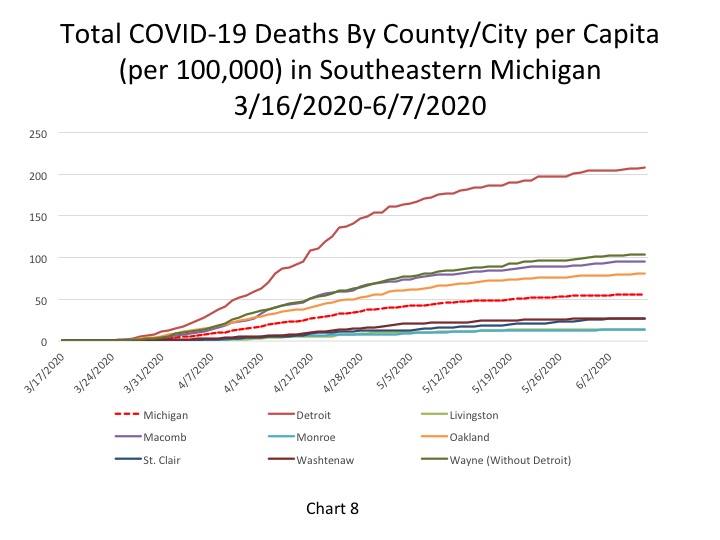
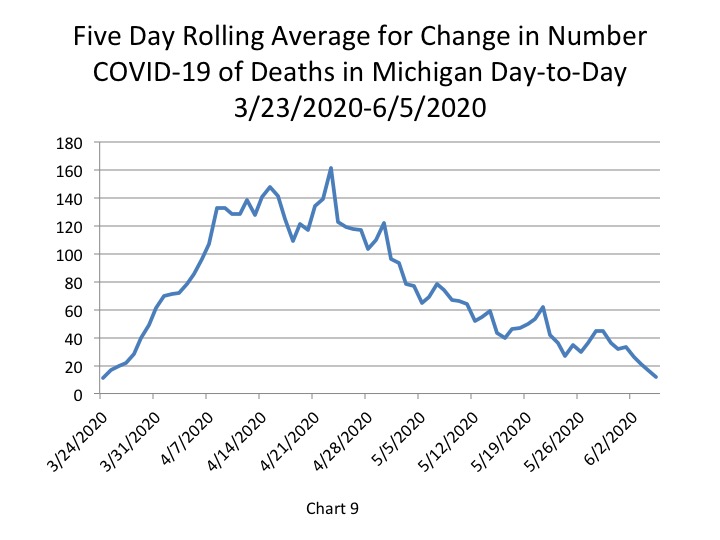
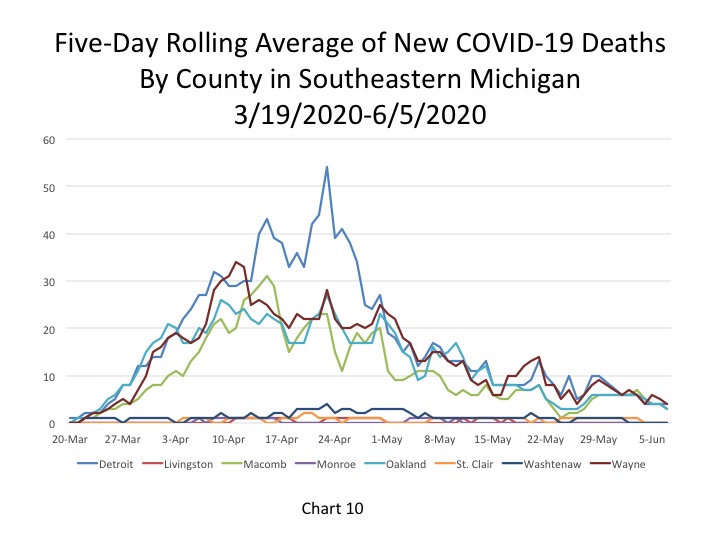
With the stagnation of the number of new cases and deaths over the weekend, the fatality rates in Southeastern Michigan also remained the same, as did the State’s rate. For the nineteenth day in a row the State reported a fatality rate of 9.6 percent. Detroit reported a fatality rate of 12.5 percent.
One reason we may be seeing such high fatality rates in Michigan is due to the low testing rates. When only having-presumably-a lower of number confirmed COVID cases than is actually likely due to the limited availability of tests, the fatality rate appears higher because the base comparison is smaller than it might be.
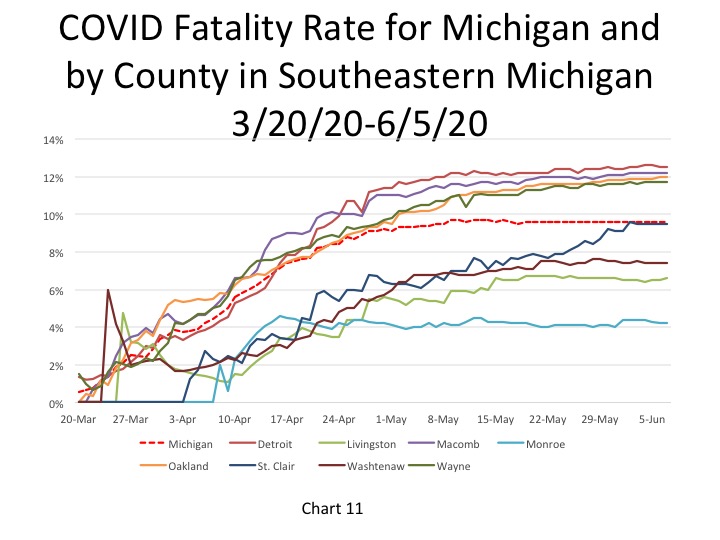
This posts shows how there were few new COVID cases and deaths reported over the weekend. We do know that the number of cases and deaths has been declining over the last few weeks. However, the Detroit Free Press reported that a Michigan Department of Health and Human Services representative said that Sundays are typically when the lowest numbers are reported. Additionally, the Michigan Department of Health and Human Services has changed how they report the data visually and is now displaying confirmed and probable cases.